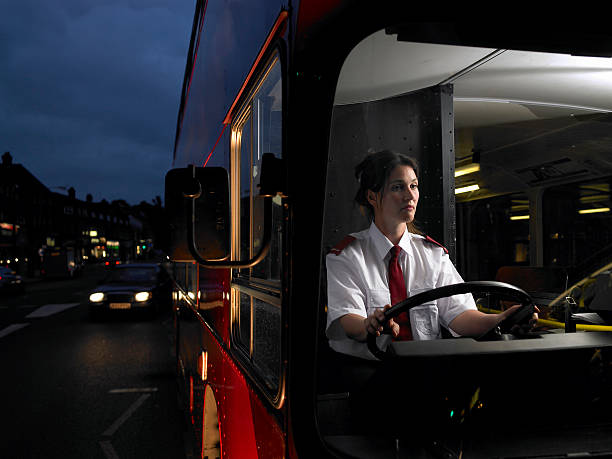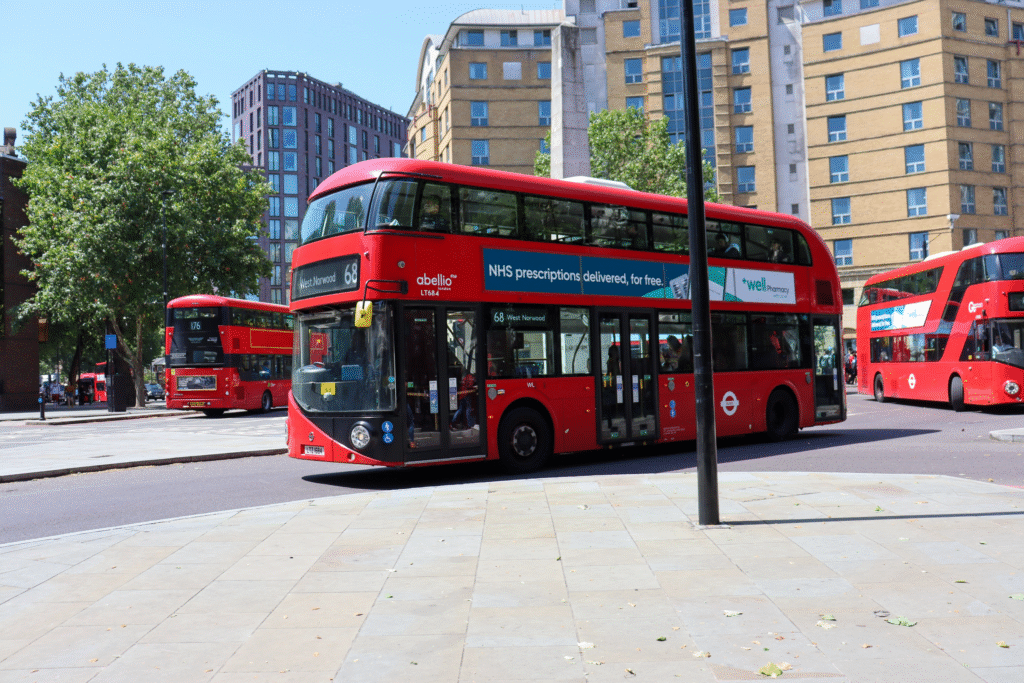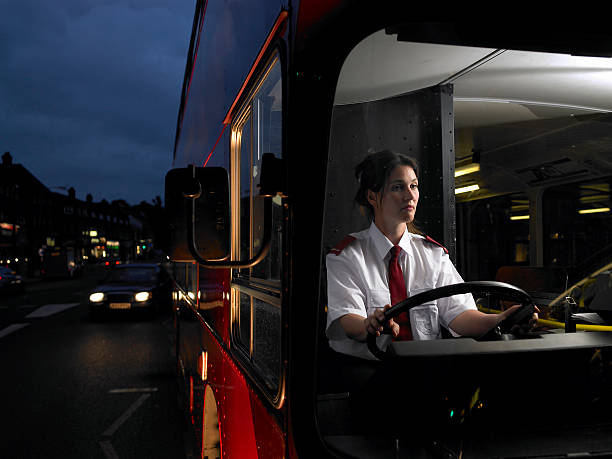
Passenger Carrying Vehicle Theory Test (Cat D)
Try our 3-Day Unlimited access trial.
Already Signed Up?
We understand that choosing study materials for a crucial exam like the driving theory test requires trust. That’s why we invite you to experience our unique, high-yield content completely risk-free. Access all our premium content for 3 days, absolutely free.
Our material is licensed from the DVSA, the people who set the test and reproduced under Crown Copyright licence, developed and rigorously reviewed by experts deeply familiar with the driving theory test and official regulations. Beyond our exceptional quality and significantly affordable subscription, choosing us means all profits directly support Mindful Gaming UK’s charitable mission.
Try us today; your investment empowers vital work for our community.
Looking To Pass Your PCV Driving Theory Test the FIRST Time?
You’re in the Right Lane!

Looking To Pass Your PCV Theory Test the FIRST Time? You’re in the Right Lane! Stop worrying and start preparing with confidence. Your PCV theory test doesn’t have to be overwhelming. By learning with the latest DVSA-licensed questions, clear explanations, and realistic CGI hazard perception clips tailored to passenger transport drivers, you’re on the most efficient route to passing!
Unlock the Keys to Success:
Mindful Theory Driving delivers DVSA-licensed content at your fingertips. As a licensed Crown Copyright holder working with the DVSA—the agency that writes the actual exam—you’re not just revising, you’re preparing with the real thing. Every question and resource is sourced from licensed material to ensure complete alignment with your test day experience.
Everything You Need, and Then Some!
Created specifically for PCV learners, our revision hub gives you the full toolkit for test success:
- Unlimited PCV Mock Theory Tests: Practice again and again until you feel fully confident and test-ready.
- Advanced Learning Features: Get tailored support for challenging topics with tools that speed up your understanding and retention.
- Fast-Track Learning: Clear content and streamlined tools help you absorb information quickly—so you spend less time studying and more time progressing.
Ready to Experience the Difference?
Our PCV Theory Test practice package is built to help you pass with confidence. Starting from just £4, it’s a smart investment in your career. And even better: Try all driver categories FREE for 3 full days—no strings attached.
Don’t just aim to pass. Be sure of it. Start your free trial today and take the first step toward qualifying with clarity and confidence.


About the PCV Test
Understanding Your Bus/Coach (PCV) Licence Categories
To drive buses and coaches legally, you need the correct PCV licence category, which depends on the number of passenger seats and whether you intend to tow a trailer.
- Minibus Licences:
- Category D1: Permits you to drive minibuses with no more than 16 passenger seats and a maximum length of 8 metres. You can also tow a trailer with a Maximum Authorised Mass (MAM) of up to 750 kilograms.
- Category D1+E: Allows you to drive a Category D1 minibus with a trailer exceeding 750 kilograms MAM. However, the trailer’s MAM cannot exceed the unladen weight of the minibus, and the gross combined weight of both vehicle and trailer cannot exceed 12,000 kilograms.
- Bus and Coach Licences:
- Category D: Entitles you to drive any bus or coach with more than 8 passenger seats, with the ability to tow a trailer with a MAM of up to 750 kilograms.
- Category D+E: This licence is required if you wish to tow a trailer with a MAM over 750 kilograms with a Category D vehicle.
Excelling in Your PCV Theory Test:
The PCV theory test is designed to ensure you have the extensive knowledge required to operate large passenger vehicles safely and responsibly. It comprises three parts:
- Multiple Choice Test: This section is more comprehensive than the standard car theory test, covering topics such as passenger safety, vehicle weights and dimensions for larger vehicles, drivers’ hours and work regulations specific to PCV drivers, first aid, and emergency procedures, in addition to the Highway Code and road signs. The PCV multiple-choice test consists of 100 questions, and the pass mark is 85 out of 100.
- Hazard Perception Test: Similar to other categories, this section assesses your ability to identify developing hazards. The PCV hazard perception test features 19 video clips, each containing one or more developing hazards that a PCV driver might encounter. You can score up to five points per hazard, and the pass mark is 67 out of 100.
- Case Studies Test: This section is crucial for PCV drivers as it evaluates your understanding of real-life scenarios you might face while transporting passengers. It presents seven case studies, each followed by 6-8 questions (totaling around 50 questions). These scenarios cover passenger handling, safety procedures, legal requirements, and emergency situations. The pass mark for the case studies test is also 85 out of 100.
Preparing Effectively for Your PCV Theory Test:
- Consistent Practice is Key: As you rightly advise, make extensive use of our practice resources on this website. The questions are designed to be similar to those you’ll encounter in the theory test.
- Learn on the Go: Our website is fully compatible with smartphones and tablets, allowing you to practice anytime, anywhere, even in the lead-up to your test. Utilize this flexibility to reinforce your knowledge.
- Think Clearly and Manage Your Time: During the multiple-choice test, take your time to read each question carefully. While you can often deduce the correct answer, avoid rushing and ensure you understand the context. Keep an eye on the clock to ensure you don’t run out of time across all three sections of the test.
- Prioritize Well-being: Ensure you are well-hydrated and have had a good night’s sleep before your test. Being alert and focused will significantly improve your ability to process information and answer correctly.
- Understand the Regulations: Pay close attention to the specific regulations governing PCV drivers, such as drivers’ hours and passenger safety, as these will be heavily featured in the theory test.
From Theory to Practical: Your Journey to Becoming a PCV Driver:
Upon successfully passing all three parts of your PCV theory test, the DVSA will issue you a theory test certificate. This certificate is valid for two years from the date of passing, and you must book and pass your practical driving test within this timeframe using the theory test pass number.
The PCV Practical Driving Test:
The PCV practical test is a comprehensive assessment, typically lasting around 90 minutes, designed to evaluate your ability to drive a large passenger vehicle safely and competently while adhering to all relevant regulations. It includes several components:
- Vehicle Safety Questions (“Show Me, Tell Me”): At the start of the test, the examiner will ask you a series of “show me” and “tell me” questions relating to the safety aspects of the vehicle. These questions cover essential checks you would perform before and during a journey (DVSA provides a specific list of these questions for PCV tests).
- Practical Road Driving: The majority of the test involves driving on various road types and in different traffic conditions. The examiner will observe and assess your:
- Use of Vehicle Controls: Smooth and correct operation of the steering, gears, brakes, accelerator, and other controls.
- Moving Away: Safely moving away from a stationary position, including at an angle, uphill, and downhill, demonstrating appropriate clutch and accelerator control (for manual vehicles) and hazard observation.
- Braking: Smooth, controlled, and timely braking in various situations, including emergency stops.
- Use of Mirrors: Regular and effective use of all mirrors to maintain awareness of your surroundings, particularly blind spots, especially before changing direction or manoeuvring.
- Giving Signals: Clear, timely, and correct use of indicators, brake lights, and hazard warning lights to communicate your intentions to other road users.
- Awareness and Anticipation: Demonstrating a proactive approach to safety by anticipating the actions of other road users and potential hazards.
- Managing Progress and Controlling Speed: Maintaining appropriate speed for the road conditions and traffic flow, while making steady progress without undue hesitation.
- Dealing with Hazards: Identifying and reacting safely and effectively to various hazards.
- Selecting Safe Stopping Places: Choosing safe and legal places to stop the vehicle.
- Off-Road Exercises: You will be required to perform specific off-road manoeuvres to demonstrate your vehicle handling skills:
- S-Shaped Reverse into a Bay: Accurately and safely reversing the bus or coach into a designated bay, maintaining control and observing for hazards.
- Uncoupling and Re-coupling Procedure (if applicable): If you are taking a test with a trailer (Category D+E or D1+E), you will need to demonstrate the correct and safe procedures for uncoupling and re-coupling the trailer.
Key Tips for Your PCV Practical Test:
- Prioritize Safety Above All Else: Your primary focus should always be on driving safely and responsibly, demonstrating a professional attitude towards passenger safety and other road users.
- Communicate Clearly: Use your signals effectively and make eye contact with other road users where appropriate to show your intentions.
- Maintain Consistent Observation: Continuously scan your mirrors and surroundings to build a comprehensive picture of the traffic situation.
- Drive Smoothly: Avoid jerky movements with the steering, accelerator, and brakes. Smooth driving contributes to passenger comfort and safety.
- Listen Carefully to Instructions: Pay close attention to the examiner’s instructions and follow them accurately.
- Stay Calm and Focused: Try to remain calm and concentrate on your driving. If you make a mistake, don’t dwell on it; focus on driving safely for the remainder of the test.
By thoroughly preparing for both the theory and practical tests, understanding the specific requirements for PCV drivers, and adopting a safety-first approach, you’ll be well on your way to obtaining your bus or coach licence and embarking on a rewarding career in passenger transport.

Get Started with HGV Theory Revision
Join Mindful Theory Driving Today!
Start your journey to Driving Theory success with our comprehensive and charity-supported platform.
3 Day Trial
£0Access the full website for 3 days
1 Year HGV,PCV, ADI
£5Access HGV, PCV and ADI resources for 1 year
6 Months All Categories
£4Access all test revision resources for 6 months
1 Year All Categories
£6Access all test revision resources for 1 year
Why Trust Our Resources?
Authentic Questions
All Questions are licensed from the DVSA, the people who set the test and reproduced under Crown Copyright licence.
Crown Copyright
Mindful Gaming UK holds Crown Copyright and is licensed to reproduce DVSA-licensed study materials. This includes resources like the Highway Code, which originates from the Ministry of Transport and is also protected under Crown Copyright.
Regularly Reviewed
Content is regularly reviewed and updated as per DVSA guidance.
Immediate Feedback
Review answers and explanations to learn effectively.
Supports a Cause
Every user helps support Mindful Gaming UK, our charity. If you enjoy what you see, please donate here.
Realistic Interface
Familiarize yourself with an exam-like environment.
Support Our Causes!
At Mindful Theory Driving, your journey towards passing your driving theory test extends beyond personal achievement. We are an integral part of Mindful Gaming UK (Charity No. 1212285), a dedicated charity committed to supporting individuals and families affected by gaming disorders through therapy and advice. Our affordable rates ensure accessibility to high-quality study materials, and importantly, every single profit generated from your subscription directly fuels our charitable mission. For additional ways to support our vital work, please visit our website at https://www.mindfulgaminguk.org or click the Support Us button.
Also, check the charity webste for limited DISCOUNTS on Plans!